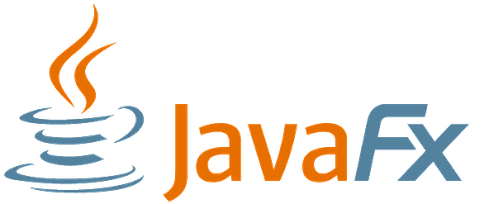JavaFX Tutorial
Introduction of JavaFX:
The most popular applications called Rich Internet Application are build using the JavaFX. This application can run across many platforms. Various devices such as mobile, computers, and tablets can run JavaFX applications. The java programmer tends to use AWT or Swing for GUI applications. After when JavaFX is invented java programmers started using JavaFX for GUI applications. Due to the best visual experience programmers prefer JavaFX to give a smooth reliable experience to users. The JavaFX applications are more animated and enhanced applications that can be available as a browser plug-in or maybe in the form of virtual machines. Various client-side applications can be developed with advanced features using JavaFX. JavaFX allows adding various advanced features such as 2D, and 3D, web and UI controls. JavaFX also allows using existing features of other applications such as AWT and Swing.

JavaFX History
Chris Oliver was the original inventor of the JavaFX. He invented this technology while working in See Beyond Technology Corporation. But this technology is later adopted by Sun Microsystems. When Chris Oliver was working on the project Form Follows Functions, he invented JavaFX. It is mainly for providing advanced functionality of UI controls. Sun Microsystem acquired this project in 2005 and announced it officially in 2007. JavaFX 1.0 version is released in 2008, then Oracle acquired it and put it before JavaFX 1.2. Now the recent version is JavaFX 1.8.
JavaFX Features
Following are the features of JavaFX:
1. JavaFX is written in Java:
The java is used to develop the JavaFX. It is available to run on Java Virtual Machine (JVM). It is platform-independent. It has many classes and interfaces under the java library.
2. FXML:
FXML language is supported by JavaFX. It is just like an HTML language. It is basically a declarative markup language. It is mainly used in JavaFX to develop User Interfaces. Advanced GUI is provided to the user with help of FXML in JavaFX.
3. Scene Builder:
FXML Markup is generated using the Scene Builder which can be ported to an IDE. This is the application provided by JavaFX integrated with Java IDEs like NetBeans and Eclipse. The drag and drop applications are used just like swings to develop UI applications under Scene Builder.
4. Web View:
JavaFX applications have web pages embedded in them. WebKitHTML technology is used with web view to embed the web pages.
5. Printing and Canvas API:
In the JavaFX scene printing, a canvas API provides many methods to draw various components in the area of the JavaFX scene. Set of classes for the Canvas are available in the javafx.scene.canvas. All the printing classes are available in the package javafx.print.
6. Rich set of APIs:
The rich set of API having the 2D, 3D and advanced graphic features is provided by the JavaFX library. All the functionality of java is also included in this set of API. All the features of java such as annotations and multithreading are included in it.
7. Graphics Pipeline:
JavaFX has a hardware-accelerated graphics pipeline. It is most popularly known as the prism. It is mainly used to provide smooth graphics.
Advantages of JavaFX:
- JavaFX provides a cleaner API and it is a lot easier to work with JavaFX.
- Media support is provided by JavaFX. e.g., video player, audio, etc.
- CSS styling is available in JavaFX
- JavaFX is currently owned by Oracle and when you report any issue or bug, you can see action on it by the company.
- A built-in animation system is available in JavaFX.
Disadvantages of JavaFX:
- JavaFX doesn't have a system look and feel.
- JavaFX is not quite mature in terms of improving all the bugs in the system. In this field, JavaFX has more mature competitors.
- JavaFX doesn't provide Java Native Interface access to the platform window structure.
- JavaFX is stacked on top of another large Java Runtime Environment. Although JRE is available on every major platform but it is not installed everywhere.
- JavaFX is very dependent on the huge infrastructure that bounds Java.
Applications of JavaFX:
Following are real-world applications of JavaFX:
- NEOS – New Eurovision Operations System in Television
- Network Capacity Optimization Emirates Airline in Aviation
- GEONS Ground System Software (GGSS) Nasa in Space
- AIDA German AIDS Foundation in Office
- Atlas Trader in Finance
- MINT TRMS in Training
- eteoBoard Saxonia Systems AG in Scrum board
- Center Device in Cloud Service
JavaFX Tutorial Index
JavaFX Applications Charts
- JavaFX Bar Chart
- JavaFX Bubble Chart
- JavaFX Pie Chart
- JavaFX Scatter Chart
- JavaFX Area Chart
- JavaFX Line Chart
JavaFX 2D Shapes
- JavaFX Arc
- JavaFX Circle
- JavaFX Ellipse
- JavaFX Line
- JavaFX Polygon
- JavaFX Rectangle
- JavaFX Color
- JavaFX Gradient Color
JavaFX 3D Shapes
JavaFX Animations
- JavaFX Rotate Transition
- JavaFX Translate Transition
- JavaFX Fade Transition
- JavaFX Fill Transition
- JavaFX Parallel Transition
- JavaFX Path Transition
- JavaFX Pause Transition
- JavaFX Scale Transition
- JavaFX Sequential Transition
- JavaFX Stroke Transition
JavaFX CSS
JavaFX Effect
- JavaFX Blend
- JavaFX Bloom
- JavaFX Color Adjust
- JavaFX Color Input
- JavaFX Drop Shadow
- JavaFX Gaussian Blur
- JavaFX Glow
- JavaFX Image Input
- JavaFX Inner Shadow
- JavaFX Light Distant
- JavaFX Light Point
- JavaFX Light Spot
- JavaFX Lighting
- JavaFX Motion Blur
- JavaFX Reflection
- JavaFX Shadow